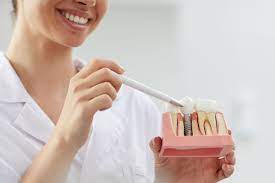Orthodontics Explored
The Basics of Orthodontics
Whether you are a child or adult, orthodontics can improve your smile and help you to have a healthy bite. Orthodontic treatment can also prevent problems that might affect your teeth or gums in the future. It can also increase self-esteem. Whether you have orthodontic problems or you are considering treatment, your dentist can answer your questions.
Typically, orthodontics treats malocclusion, or an improper bite. When your teeth do not fit properly, you may have difficulty chewing, speaking, and cleaning your teeth. Malocclusion can also lead to gum disease and tooth decay. When you have a malocclusion, you may need to undergo corrective surgery. Get the facts about chagrin falls dentist, at perfectasmile.com
 Orthodontic treatment can be effective in creating a more attractive smile and improving your chewing and speaking skills. It can also help protect your front teeth from damage. However, not all patients are eligible for orthodontic treatment. Some individuals are only candidates for removable appliances, while others require surgery. If you are not sure if you qualify for orthodontic treatment, your dentist can refer you to an orthodontist. You can also learn more about orthodontic treatment on the Find Your Dentist page.
Orthodontic treatment can be effective in creating a more attractive smile and improving your chewing and speaking skills. It can also help protect your front teeth from damage. However, not all patients are eligible for orthodontic treatment. Some individuals are only candidates for removable appliances, while others require surgery. If you are not sure if you qualify for orthodontic treatment, your dentist can refer you to an orthodontist. You can also learn more about orthodontic treatment on the Find Your Dentist page.
Orthodontic treatment is a good option for patients who are experiencing severe malocclusion. In cases of mild malocclusion, you may be able to use fixed appliances. These appliances work by changing the position of teeth, retraining muscles, and changing the angle of teeth.
Orthodontic treatment can also help patients who have underbites. Underbites occur when the lower teeth stick out more than the upper teeth. The upper teeth may also protrude if the lower teeth do not extend far enough. An underbite is not only uncomfortable, but it can also lead to improper chewing, tooth decay, and gum disease. A palate expander is also an option for patients who have narrow mouths. A palate expander allows more space for erupting teeth.
Braces are the most common type of orthodontic appliance. These are made of metal or ceramic and are bonded to the front of your teeth. The wires that are used in braces exert a pulling force on the teeth. Depending on your condition, you may need to wear headgear or a mouth guard. Your dentist can help you decide which type of brace is best for you. Braces are usually placed on the front side of your teeth, but you may have to use a brace on the side that faces your tongue.
Removable appliances can be used to correct minor problems, but they should be removed when eating and flossing. Fixed appliances are used when precision is important. These appliances are made of bands, brackets, wires, and plastic plates. When you wear a fixed appliance, you need to keep up good oral hygiene and avoid carbonated drinks and sticky foods. It is also important to avoid hard candy. The teeth should be cleaned regularly so that plaque does not form on the appliance.
If you are considering orthodontic treatment, it is important to schedule a visit with your dentist. Your dentist can give you a diagnosis of your problem and suggest the most effective way to fix it. Often, patients who have received orthodontic treatment report a higher quality of life than patients who did not receive treatment. Your dentist can also refer you to an orthodontist, which can offer a more thorough diagnosis and treatment plan.